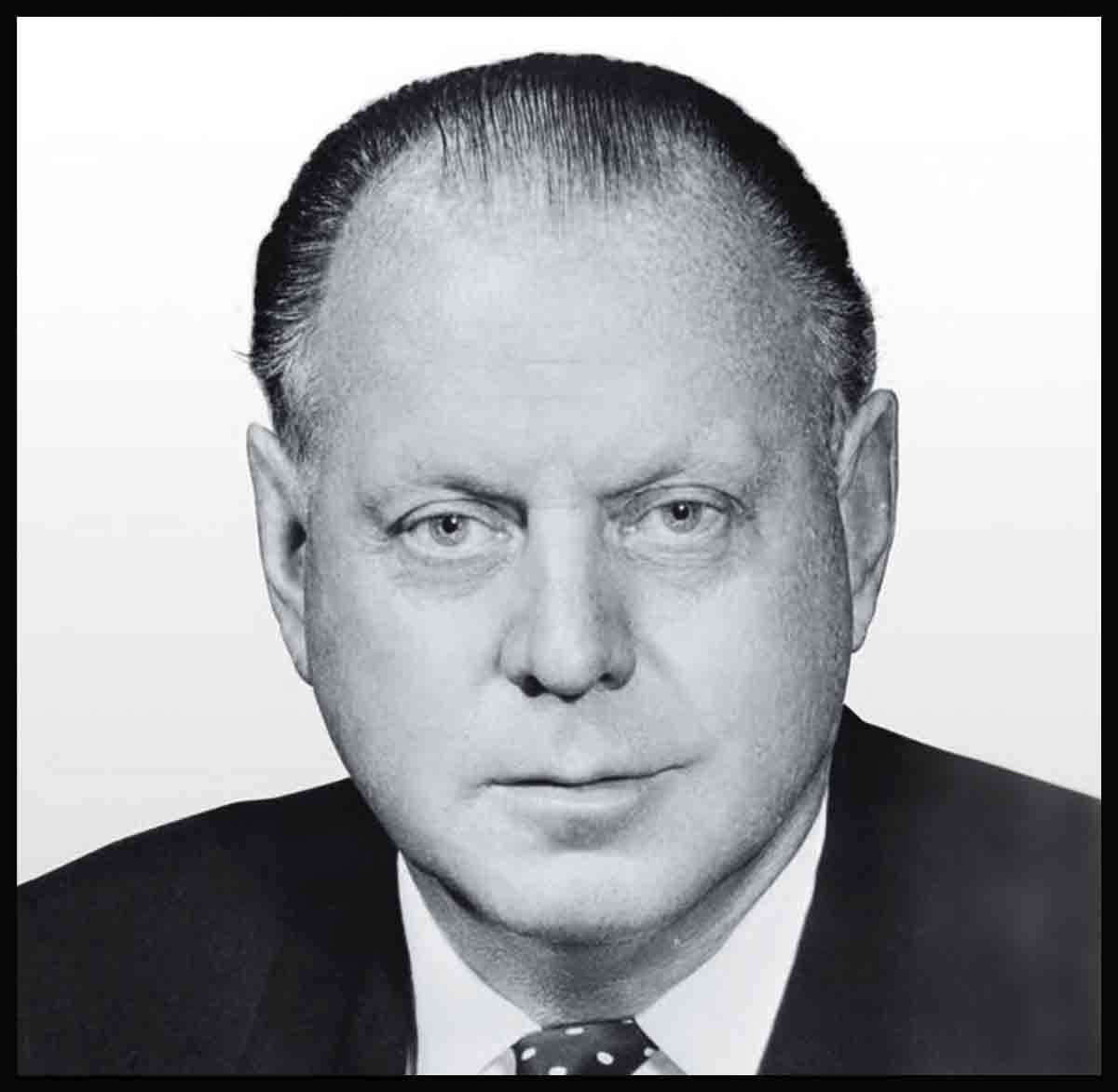
Great Designers—Harley J. Earl
Bombastic, chintzy, overblown—these are some of the criticisms regularly levelled at the designs of Harley J. Earl. But this undoubted overlord of 1950s’ American auto styling certainly knew how to design cars that the public craved. In doing so, he created some of the most iconic models of all time, and helped turn General Motors (GM) into the world’s largest corporation.
“Design and beauty not only command attention, but they are the very foundation of living.”
HARLEY J. EARL
YOU COULD ARGUE that car “styling” as such did not exist before Harley J. Earl. But this talented craftsman did more than merely invent the role of car stylist—he was a true pioneer whose influence can still be felt today.
The son of a coach-builder who had made a success of producing one-off, custom-made car bodies for Hollywood stars such as Fatty Arbuckle, Harley J. Earl learnt his craft at a young age, working alongside his father at Earl Automotive Works. Indeed, he was one of the first people to use modelling clay to give physical form to his ideas.
When Cadillac’s manager, Larry Fisher, saw Earl at work, he knew instantly that he was the right man to lead the new Art and Colour Section at GM in 1927. Within a decade, Earl had been promoted to vice-president, and his department renamed the Styling Section.
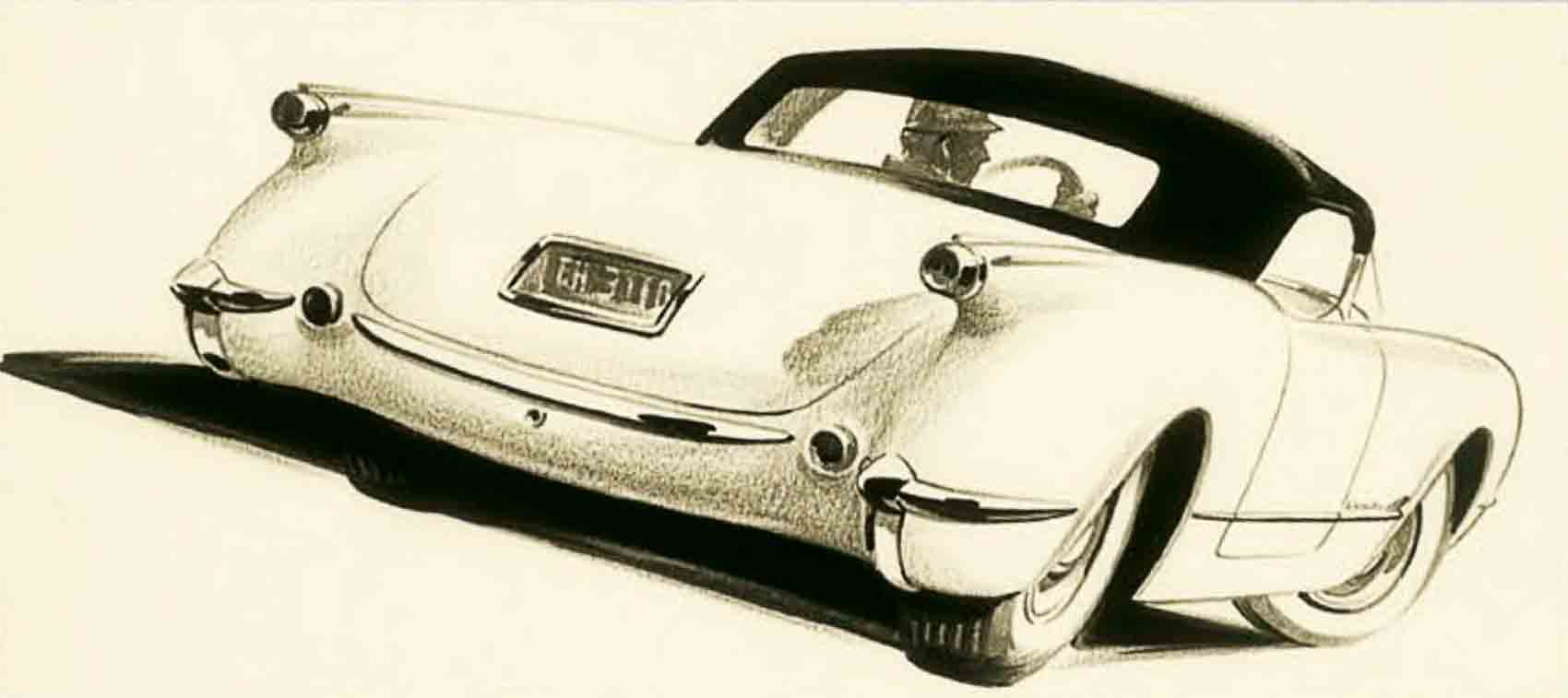
This sketch, showing the rear of a Corvette C1, not only gives a sense of the car’s smooth, sleek appearance, but also an implied feeling of speed as it accelerates away. Just 300 Corvettes were made in the first year of production.
DREAMS INTO REALITY
Earl had the brilliant idea of changing styling on an annual basis—a totally new concept at the time, but quickly adopted by the whole car industry. This significantly boosted new car sales at GM, further endearing Earl to the management.
Then, in 1938, Earl’s experimental Buick Y-Job effectively gave birth to the “concept car”. It set an auto-industry trend for show cars that exhibit new styling and technology. The Y-Job (Earl’s personal car for more than a decade) had long, sleek lines, concealed headlights, and an electric folding roof.
But Earl’s most famous idea was the tailfin, inspired by a Lockheed P-38 Lightning fighter plane. When fins first appeared, on Earl’s 1948 Cadillacs, the “jet-age” of car design had truly begun. Earl’s 1951 Buick LeSabre dream car bristled with jet-age innovation—cast magnesium bodywork, heated seats, and a roof that raised itself when a sensor detected rain. Taking the aircraft theme literally, the 1954 Pontiac Bonneville Special even used genuine Lockheed P-38 seat belts.
But for jet-age fantasy, nothing beat the XP-21 Firebird of 1954. It was powered by a jet turbine and even looked the part with its plane-inspired wings. By 1958 the Firebird III had evolved into NASA-rocket territory, with out-of-this-world fins, astronaut-style bubble canopies, and electroluminescent” instruments.
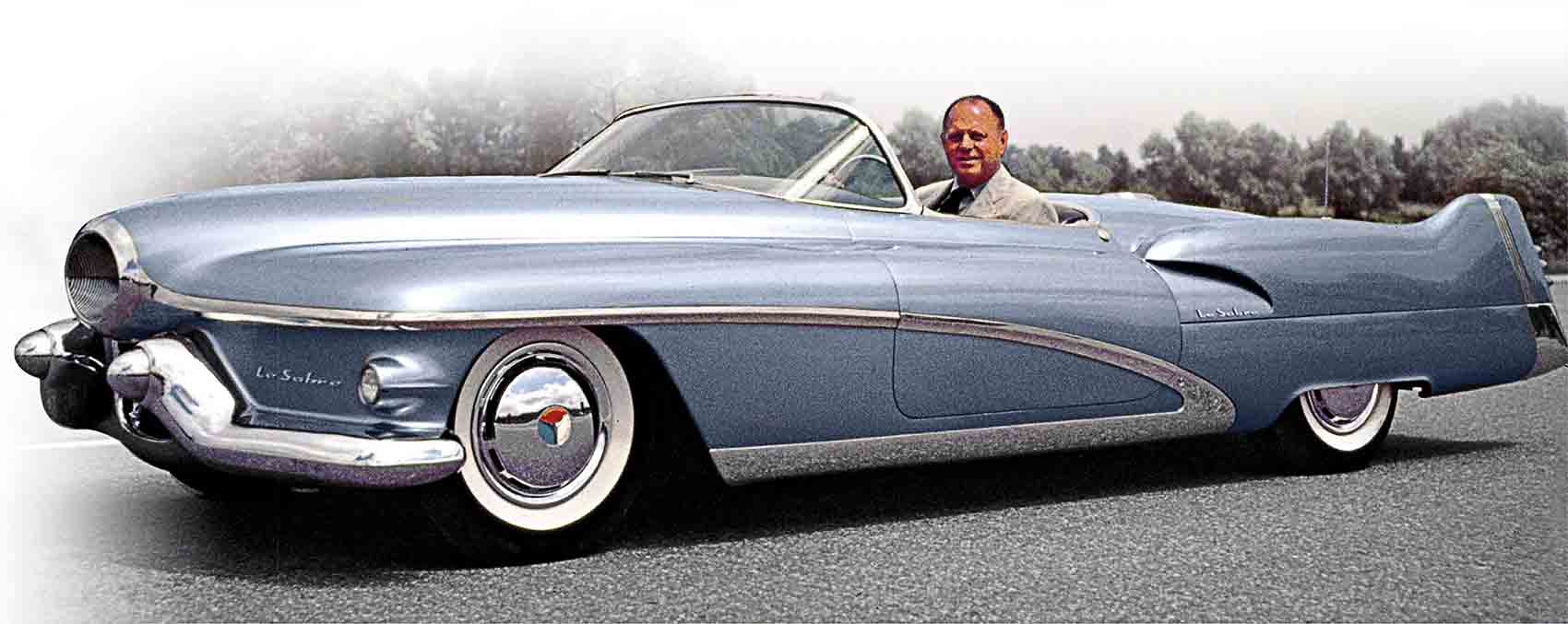
Designed as a concept car for GM, Earl’s LeSabre inspired a fashion for jet-age styling.
PROLIFIC OUTPUT
This was an era of pure showmanship, embraced by GM in rolling carnivals called Motorama that toured the whole of the US. The centrepieces of these extravaganzas were always futuristic visions of a brighter, faster, bigger age. In the peak Motorama year (1956), GM spent $10 million on the shows and attracted 2 million visitors.
Earl’s output was prolific. In just one year (1954) no fewer than 12 different dream cars were paraded in front of the public. Highlights included the Buick Centurion, Oldsmobile Golden Rocket, the knee-high Pontiac Club de Mer, Chevrolet Corvette SS, and jet-inspired Cadillac Cyclone.
Some of these Motorama “concepts” actually reached production, most famously the Chevrolet Corvette, which was an Earl product from conception to realization. America’s first real sports car in the European idiom, the 1953 Corvette, was also the world’s first mass-produced, fibreglass-bodied car. Many of Earl’s pioneering style ideas, such as two-tone paint, wraparound windscreens, and quad headlights, appeared on GM cars before any other manufacturer’s.
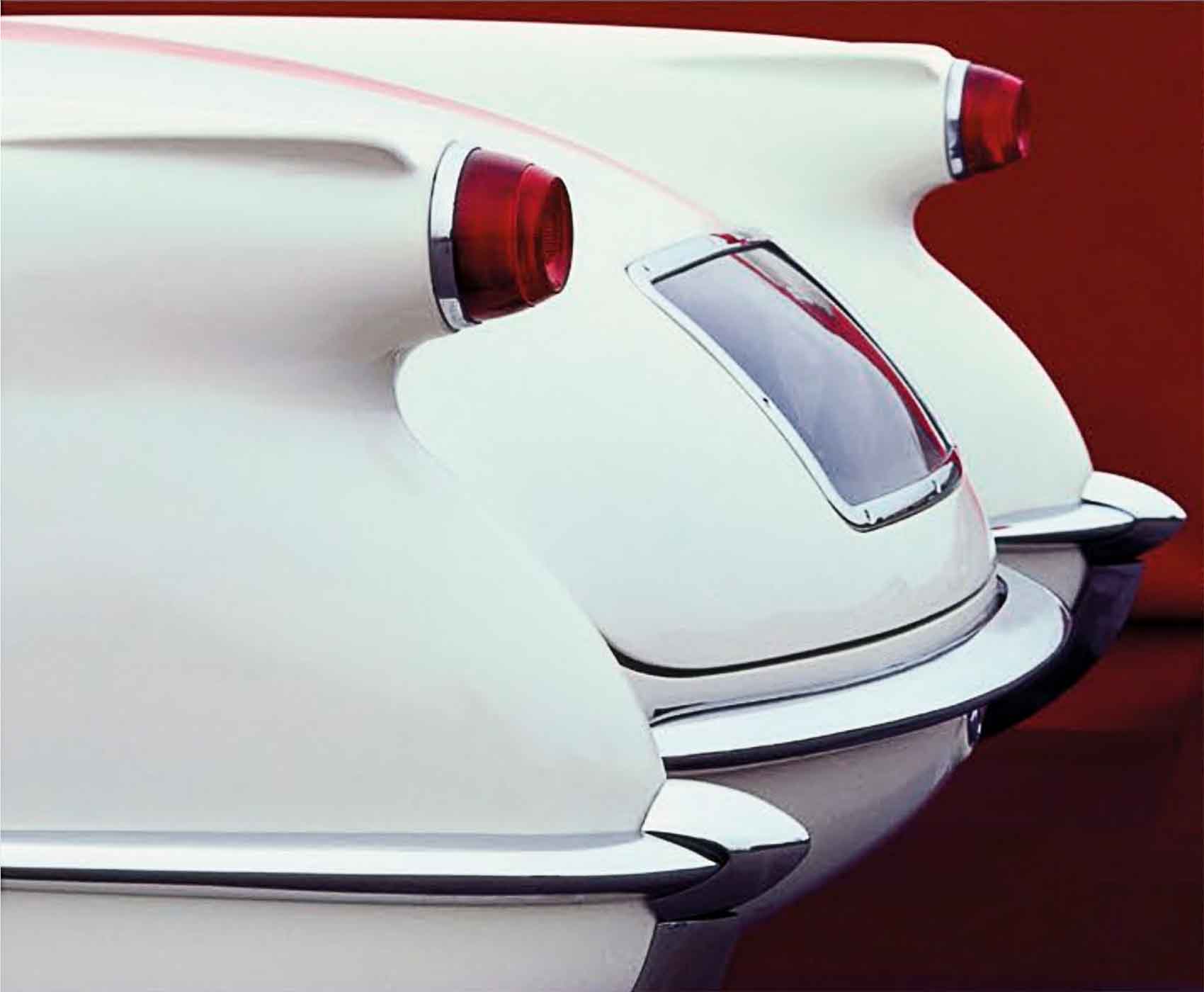
EARL’S LEGACY
The excesses of the tailfin era—when Earl did battle with Chrysler’s Virgil Exner to see who could push things the furthest—reached their peak with the 1959 Cadillac. The ’59’s towering tailfins were punctuated by sci-fi rear lights and rich swathes of chrome, while at the front, the wraparound windscreen and double grille completed the car’s flamboyant look.
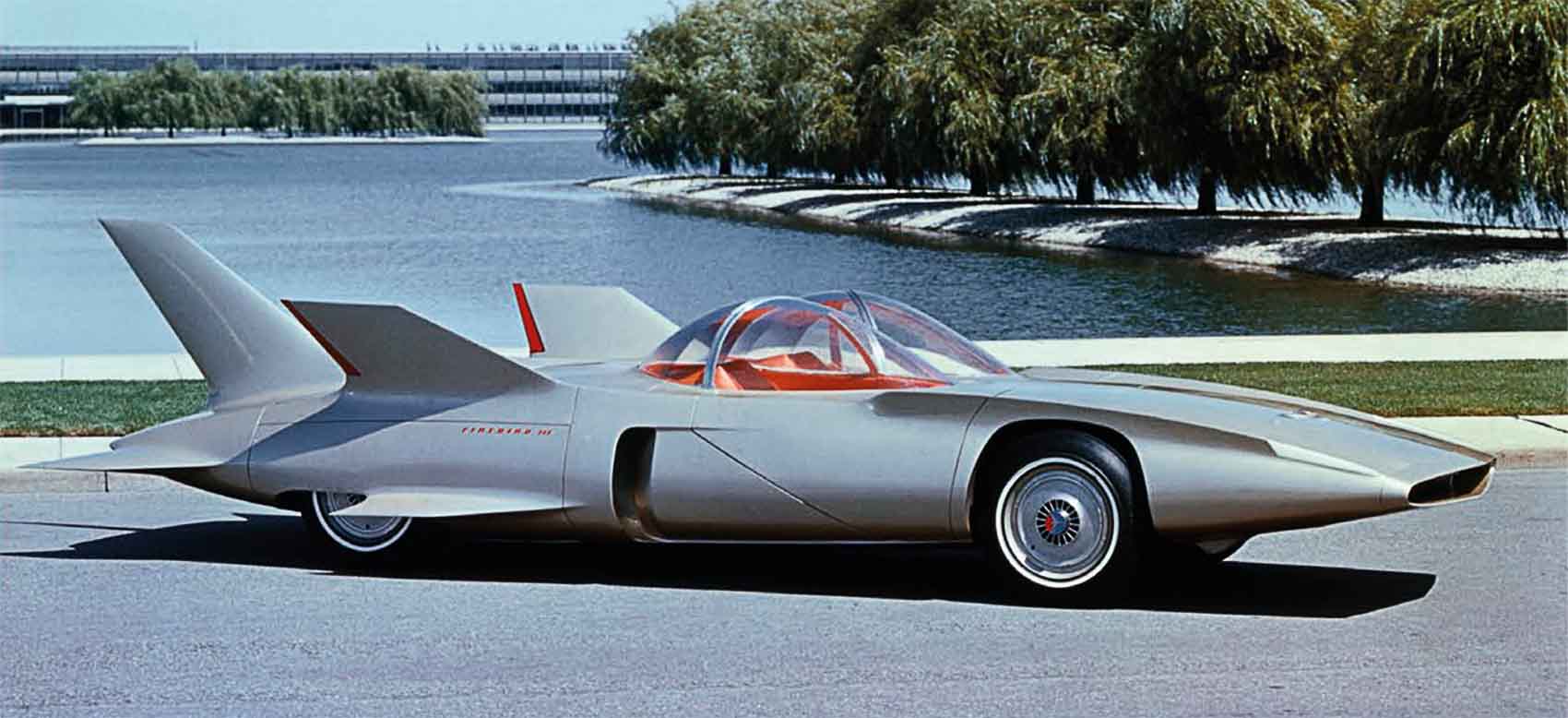
But the excess could not last. The ’59 Caddy was Harley Earl’s last design for GM. He promptly retired, and handing the reins of the styling department he had built over to Bill Mitchell. With immediate effect, the era of excessive ornamentation was over. Earl died in 1969 and his legacy cannot be overstated. Among his many achievements, he was a pioneer of promoting women stylists (his so-called “Damsels of Design”), he championed the use of crash-test dummies, and he established the Auto Design Scholarship programme. Above all, he gave cars soul, turning design into the single most important factor within the auto industry. He proved, with the numbers of vechicles he sold, that cars were not just functional transport but were also about style, passion, and aspiration.
Career highlights
>1927 Harley J. Earl designs the 1927 LaSalle for Cadillac—a huge sales success
> 1927 Earl gets his first big job, leading GM’s Art and Colour Section
> 1930 The Cadillac V16 supercar is styled by Earl and Larry Fisher. It is the first production car with a 16-cylinder engine
> 1933 Earl’s first “show car”, the Cadillac Aerodynamic Coupe, debuts in Chicago
> 1938 The era of the dream car is launched with the Buick Y-Job
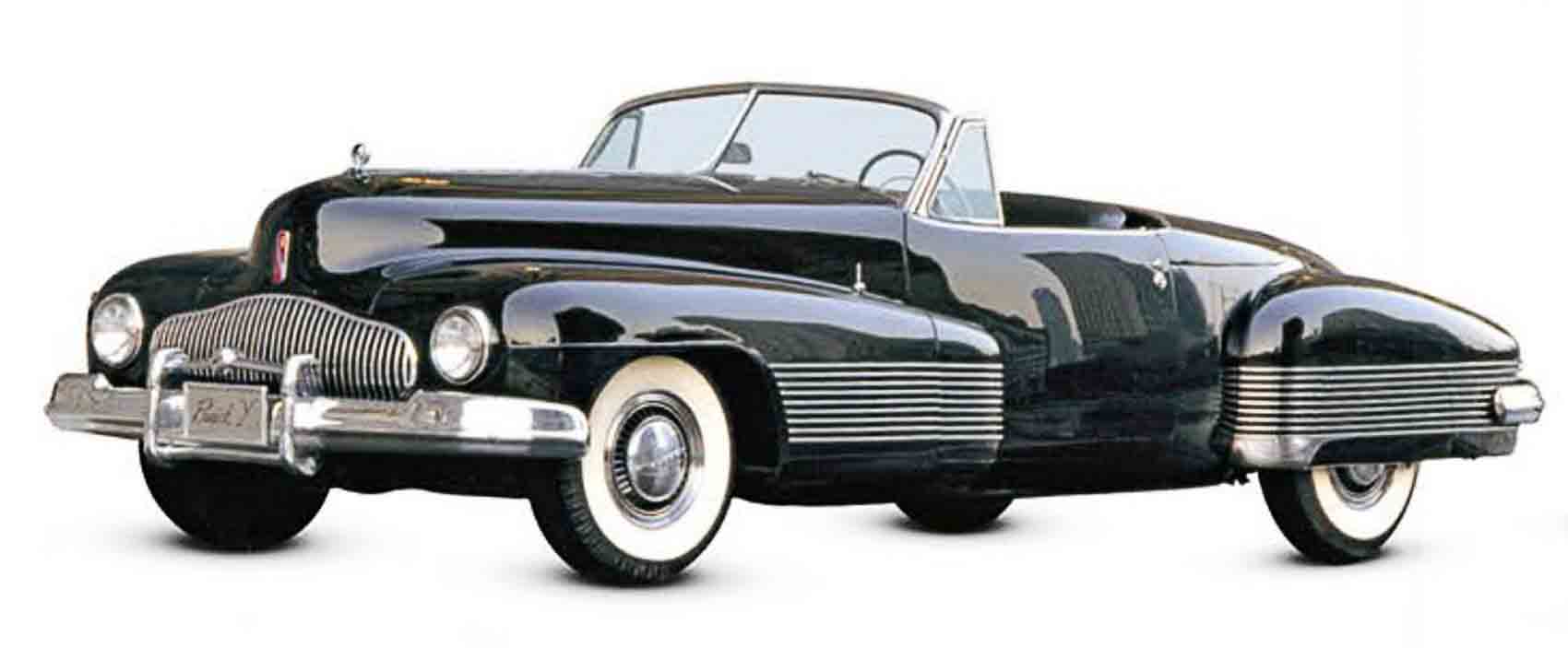
One of the auto industry’s very first concept cars, the Y-Job, established several styling cues that would be used by Buick until the 1950s. The vertical waterfall grille still appears on the company’s cars today.
> 1945 Earl sets up his own independent design firm, the Harley Earl Corporation
> 1948 Inspired by a fighter plane, the ’48 Cadillac becomes the first car with tailfins
> 1953 The Corvette sports car, conceived by Earl, reaches production
> 1954 At GM’s snazzy Motorama roadshow, the era of jet design truly takes off with the XP-21 Firebird
>1959 Earl retires just as the extravagance of Cadillac tailfins reaches its heady peak
>1969 Earl dies, aged 75
It is a quote. The Classic Car Book – The Definitive Visual History 2016




